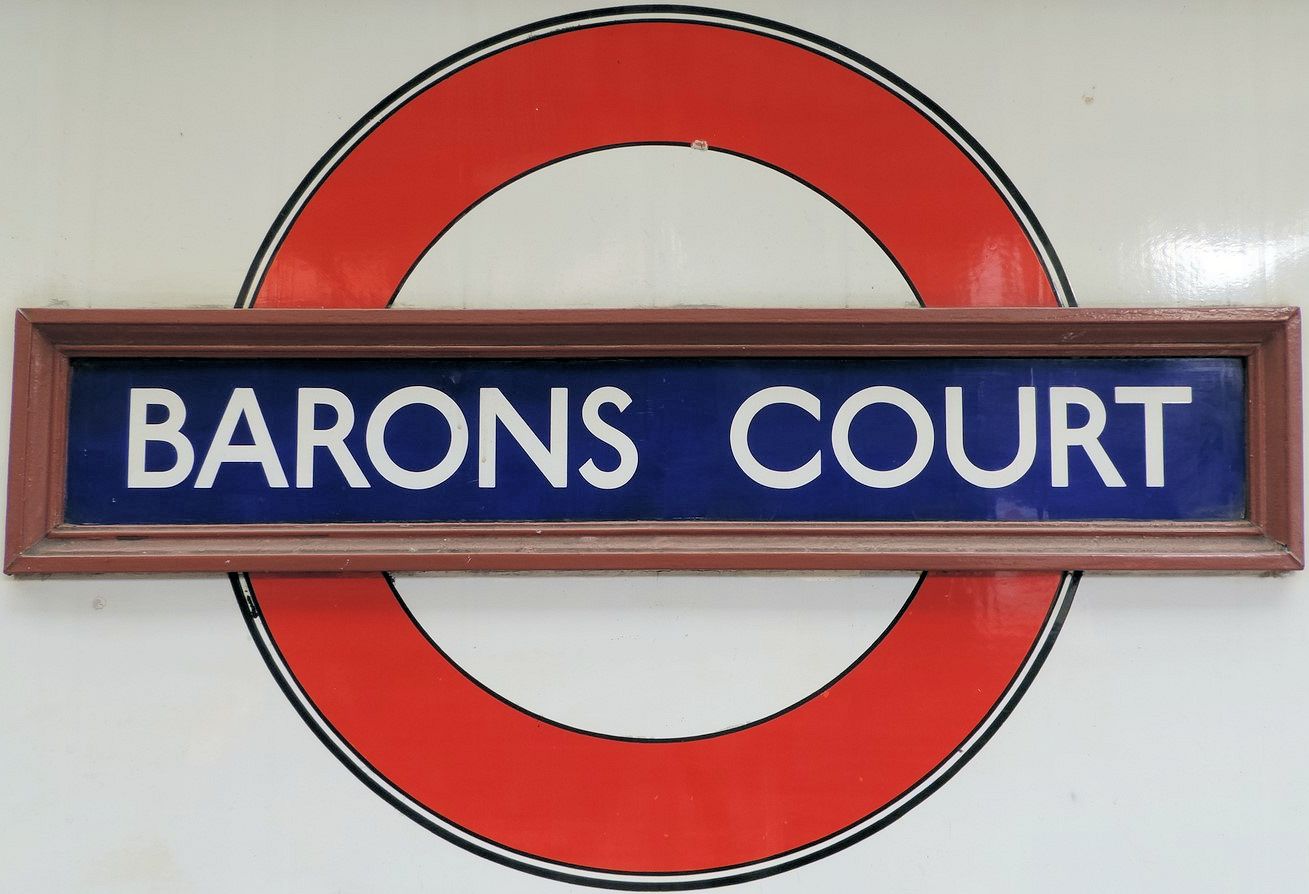 Barons Court is a London Underground station in West Kensington, Greater London. This station services the District line and the Piccadilly line. The station is located on Gliddon Road, a short distance from Talgarth Road (A4) in the London Borough of Hammersmith and Fulham. Barons Court is between West Kensington and Hammersmith on the District line, and between Earl's Court and Hammersmith on the Piccadilly line. It is in Travelcard Zone 2. East of the station, the Piccadilly line descends into tunnel towards Earl's Court and the District line continues on the surface to West Kensington. The station is the last overground stop for eastbound trains on the Piccadilly line until Arnos Grove and has a cross-platform interchange with the District line.
Barons Court is a London Underground station in West Kensington, Greater London. This station services the District line and the Piccadilly line. The station is located on Gliddon Road, a short distance from Talgarth Road (A4) in the London Borough of Hammersmith and Fulham. Barons Court is between West Kensington and Hammersmith on the District line, and between Earl's Court and Hammersmith on the Piccadilly line. It is in Travelcard Zone 2. East of the station, the Piccadilly line descends into tunnel towards Earl's Court and the District line continues on the surface to West Kensington. The station is the last overground stop for eastbound trains on the Piccadilly line until Arnos Grove and has a cross-platform interchange with the District line.
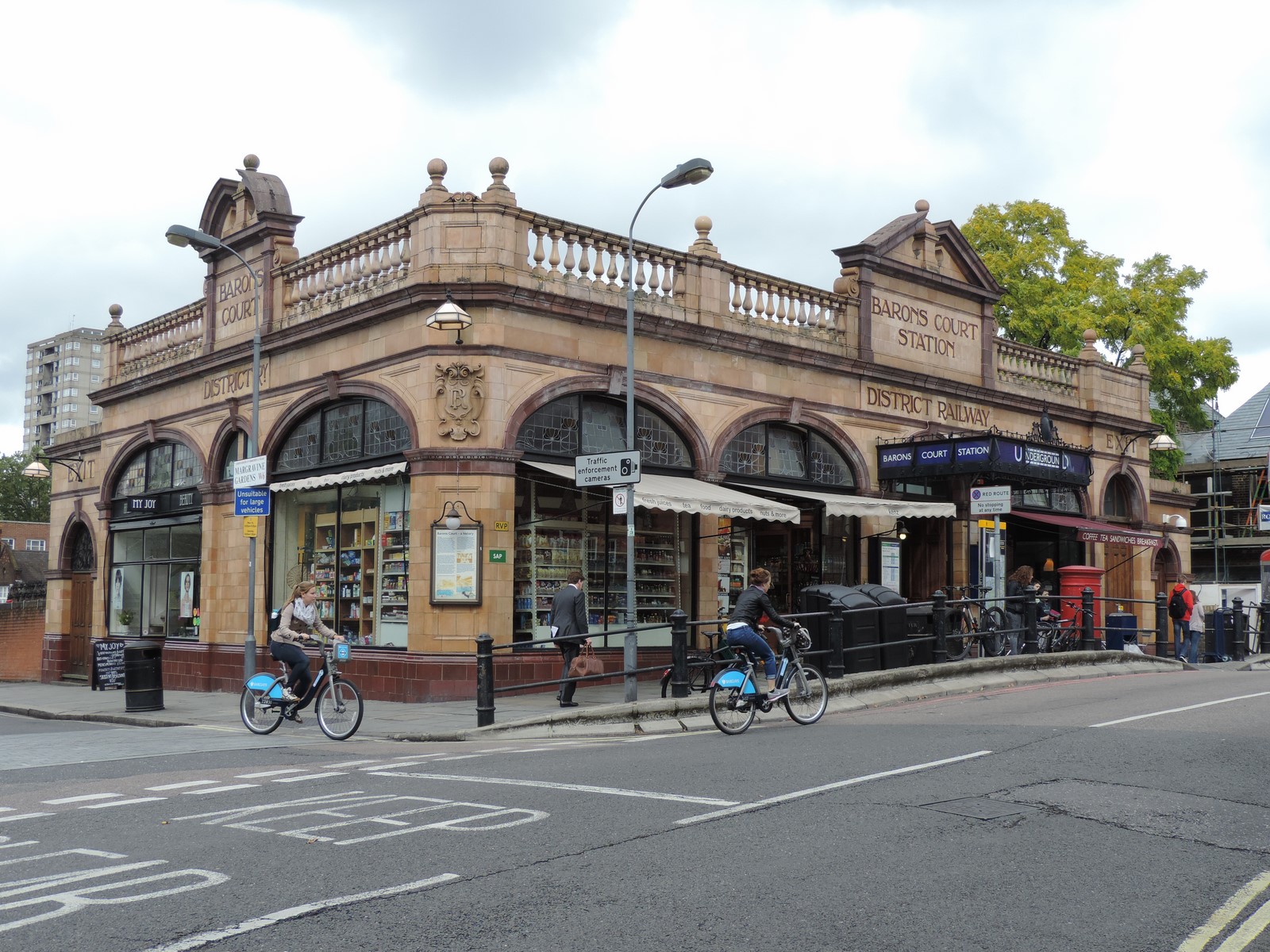 The tracks through Barons Court were first opened on 9 September 1874 when the District Railway (DR, now the District line) opened an extension from Earls Court to Hammersmith. When the line was constructed the area now known as Barons Court was open fields and market gardens to the west of the settlement of North End and there was no call for a station between West Kensington and Hammersmith. By the beginning of the 20th century; however, the area had been developed for housing and, on 10 October 1905, the District Railway (DR) opened the station to serve these new developments and in preparation for the opening of the Great Northern, Piccadilly and Brompton Railway (GNP&BR, now the Piccadilly line), then under construction.
The tracks through Barons Court were first opened on 9 September 1874 when the District Railway (DR, now the District line) opened an extension from Earls Court to Hammersmith. When the line was constructed the area now known as Barons Court was open fields and market gardens to the west of the settlement of North End and there was no call for a station between West Kensington and Hammersmith. By the beginning of the 20th century; however, the area had been developed for housing and, on 10 October 1905, the District Railway (DR) opened the station to serve these new developments and in preparation for the opening of the Great Northern, Piccadilly and Brompton Railway (GNP&BR, now the Piccadilly line), then under construction.
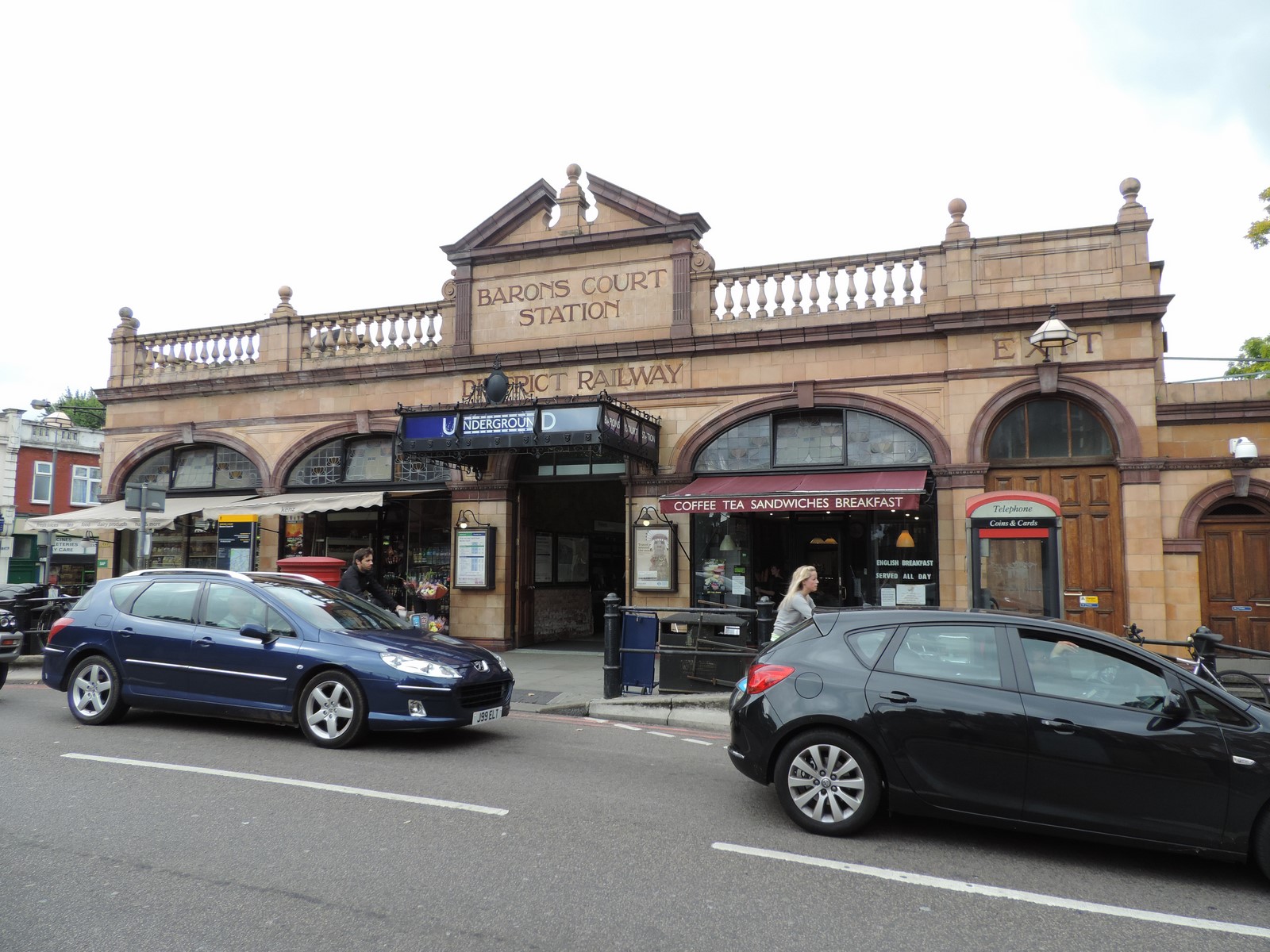 The GNP&BR began operations on 15 December 1906, running between Hammersmith and Finsbury Park. The GNP&BR tracks come to the surface east of Barons Court and the station has two island platforms to provide an interchange between the two lines - the inner pair of tracks is used by the Piccadilly line and the outer tracks by the District line.
The GNP&BR began operations on 15 December 1906, running between Hammersmith and Finsbury Park. The GNP&BR tracks come to the surface east of Barons Court and the station has two island platforms to provide an interchange between the two lines - the inner pair of tracks is used by the Piccadilly line and the outer tracks by the District line.
The station building was constructed to a design by Harry Ford in a style similar to that used at Earl's Court and Hammersmith and is now a Grade II listed building as it retains many of its original features, including terracotta facing and Art Nouveau lettering. The wooden benches on the platform with the station name along the back on enamelled metal panels are a unique feature on the entire London Underground.
History
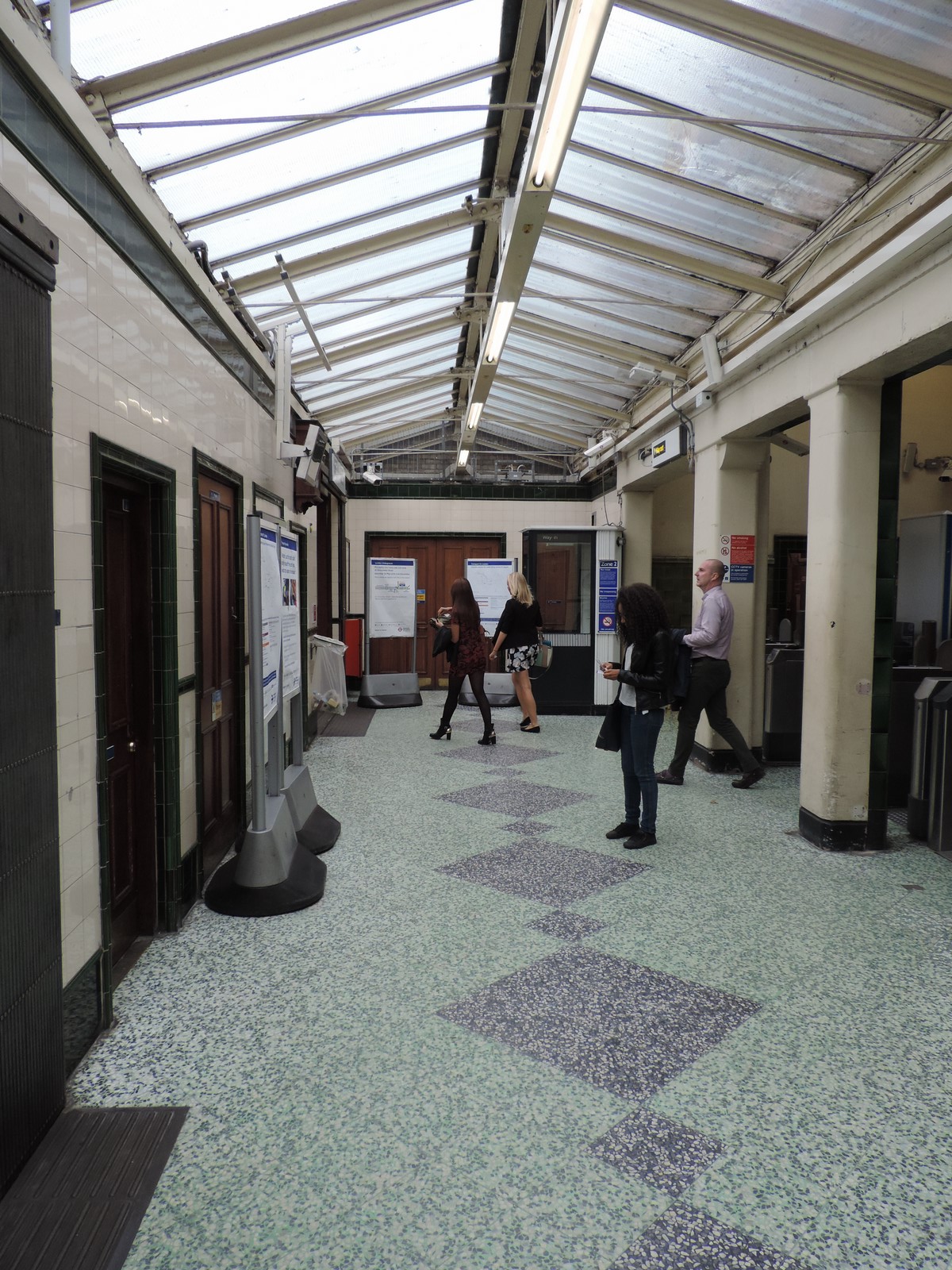 Barons Court Underground Station was built in 1904 and opened in 1905 to serve the Metropolitan District Railway (MDR). It was built on existing track laid out in 1874 when the line was extended from Earl's Court to Hammersmith. At that time the area was still agricultural land, but by end of the century it has been developed with housing. The name Baron’s Court may have been devised by Sir William Palliser, who owned and developed the land in this area. In 1901 the near-bankrupt MDR was acquired by the American transport entrepreneur, Charles Tyson Yerkes, becoming a subsidiary of Yerkes’s Underground Electric Railways Co of London Ltd (UERL). Under the UERL the planned programme of electrification of the District Line was implemented. Barons Court Station also served the Great Northern, Piccadilly and Brompton Railway, also part of the UERL, which opened in 1906 and was soon known as the Piccadilly Line. In 1931 the stairways and platform canopies were rebuilt, and the platforms extended.
Barons Court Underground Station was built in 1904 and opened in 1905 to serve the Metropolitan District Railway (MDR). It was built on existing track laid out in 1874 when the line was extended from Earl's Court to Hammersmith. At that time the area was still agricultural land, but by end of the century it has been developed with housing. The name Baron’s Court may have been devised by Sir William Palliser, who owned and developed the land in this area. In 1901 the near-bankrupt MDR was acquired by the American transport entrepreneur, Charles Tyson Yerkes, becoming a subsidiary of Yerkes’s Underground Electric Railways Co of London Ltd (UERL). Under the UERL the planned programme of electrification of the District Line was implemented. Barons Court Station also served the Great Northern, Piccadilly and Brompton Railway, also part of the UERL, which opened in 1906 and was soon known as the Piccadilly Line. In 1931 the stairways and platform canopies were rebuilt, and the platforms extended.
Harry Wharton Ford (1875-1947) was architect to the District Railway from 1900-11. He designed a number of stations for the District Railway, including Earl’s Court and Fulham Broadway, both listed Grade II.
Details
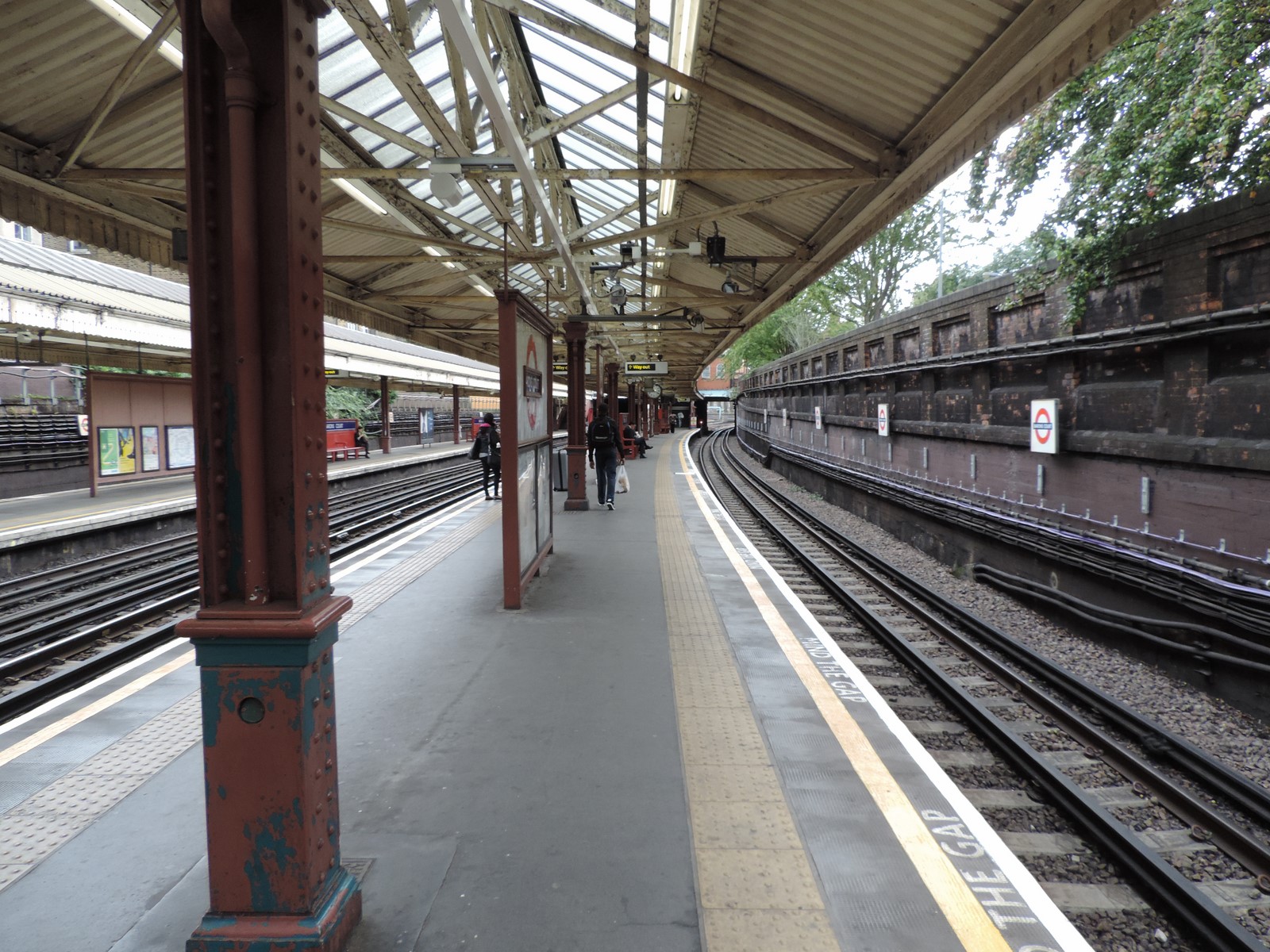 MATERIALS: Steel frame and brick cladding faced in buff terracotta and contrasting ox-blood red faience, produced by the Leeds Fireclay Co.
MATERIALS: Steel frame and brick cladding faced in buff terracotta and contrasting ox-blood red faience, produced by the Leeds Fireclay Co.
PLAN: The station consists of a single-storey entrance building facing west, which stands above the tracks. This comprises the ticket hall and three shop units. Stairs to either side of a rear landing lead down to two island platforms.
EXTERIOR: Edwardian Baroque style. The front (east) elevation is of five bays, plus a lower end bay to the north which had a second entrance, now closed. Bays 1, 2 and 4 (from the south) are shops units with elliptical keyed arches; bays 3 and 5, containing the entrance and exit respectively, and the lower north bay, have semi-circular arches and timber panelled doors. Above the entrance the frieze has tiled lettering: ‘DISTRICT RAILWAY’; above is a pilastered fascia with lettering ‘BARONS COURT STATION’, surmounted by broken pediment. The entrance has an iron canopy with a cartouche, installed before 1916, restored in the 1990s. To either side of the entrance are 1920s bronze information panels with a swan-neck lamp bracket and globe lamp (right-hand lamp reinstated in 1990s). The south-east corner has a cartouche with the DR monogram and a bronze information panel and lamp. The 3-bay south elevation has two elliptical arches with shop fronts, divided by a narrow blind round-arched bay, above which the frieze has lettering ‘DISTRICT RY’; above is a fascia similar to that of main entrance but narrower with a broken segmental pediment. To the left is a lower bay with ‘EXIT’ sign. This has timber panelled doors and a fanlight with an elaborate iron grille. Above the entablature to both elevations is a balustraded parapet, broken by piers above each bay, each with a ball finial. The shop fronts are largely intact and have central recessed lobbies and tripartite transom lights with art-nouveau stained glass. Above the two exits, and to the SE corner, are original glass lanterns on iron brackets.
INTERIOR: The ticket hall walls are clad in green tiles with a frieze of darker green tiles with sunburst motifs. On the N wall is a pair of original tiled pedimented ticket office windows (those on the opposite wall were removed in the 1930s when the ticket hall was enlarged). Above each is a later bronze illuminated box sign. Original tiles in brown and cream also survive to the landing area. The stairs to the platforms are enclosed in glazed timber compartments with modern corrugated-iron roof cladding.
PLATFORMS: The platform canopies were rebuilt in 1931; the corrugated iron roof cladding is modern. The platforms are notable principally for the series of original back-to-back wooden benches bearing the station name, and free-standing timber sign and poster boards. The enamelled metal signs probably date from the 1920s.